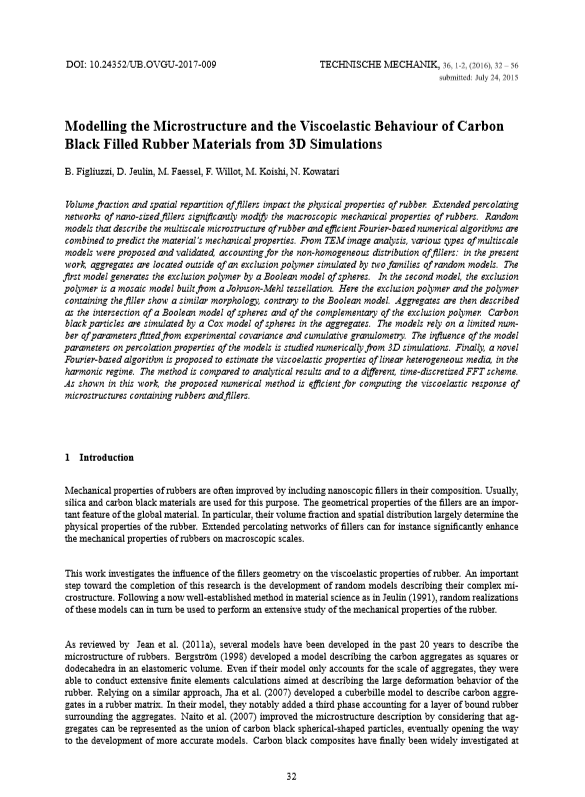Modelling the Microstructure and the Viscoelastic Behaviour of Carbon Black Filled Rubber Materials from 3D Simulations
DOI:
https://doi.org/10.24352/UB.OVGU-2017-009Abstract
Volume fraction and spatial repartition of fillers impact the physical properties of rubber. Extended percolating networks of nano-sized fillers significantly modify the macroscopic mechanical properties of rubbers. Random models that describe the multiscale microstructure of rubber and efficient Fourier-based numerical algorithms are combined to predict the material’s mechanical properties. From TEM image analysis, various types of multiscale models were proposed and validated, accounting for the non-homogeneous distribution of fillers: in the present work, aggregates are located outside of an exclusion polymer simulated by two families of random models. The first model generates the exclusion polymer by a Boolean model of spheres. In the second model, the exclusion polymer is a mosaic model built from a Johnson-Mehl tessellation. Here the exclusion polymer and the polymer containing the filler show a similar morphology, contrary to the Boolean model. Aggregates are then described as the intersection of a Boolean model of spheres and of the complementary of the exclusion polymer. Carbon black particles are simulated by a Cox model of spheres in the aggregates. The models rely on a limited number of parameters fitted from experimental covariance and cumulative granulometry. The influence of the model parameters on percolation properties of the models is studied numerically from 3D simulations. Finally, a novel Fourier-based algorithm is proposed to estimate the viscoelastic properties of linear heterogeneous media, in the harmonic regime. The method is compared to analytical results and to a different, time-discretized FFT scheme. As shown in this work, the proposed numerical method is efficient for computing the viscoelastic response of microstructures containing rubbers and fillers.





